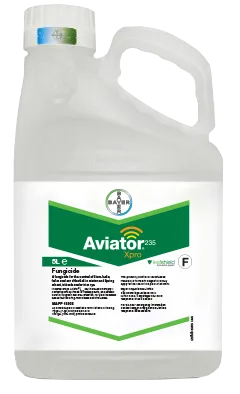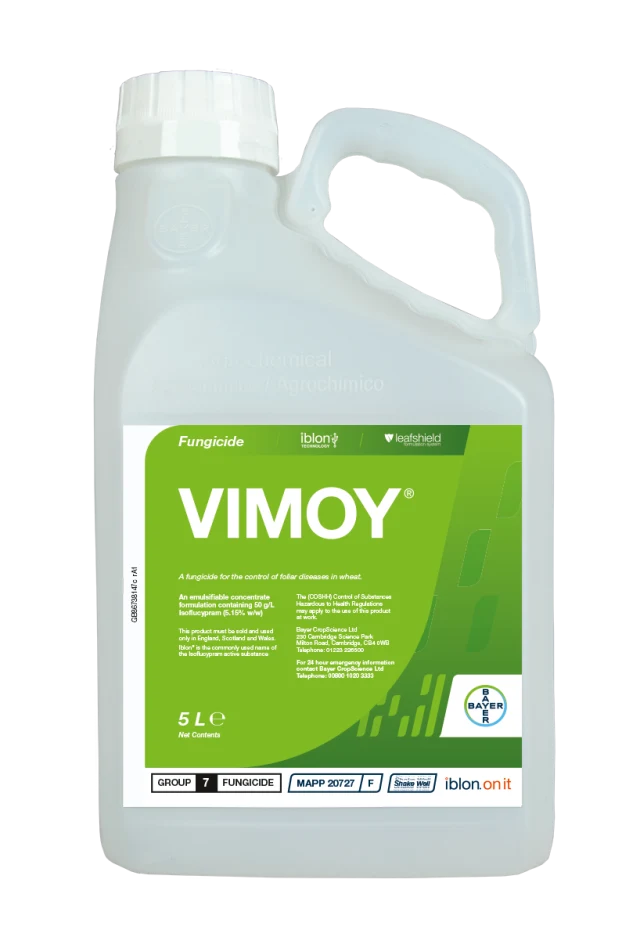Published on 30th April 2025
Local Insights
How to control disease whatever the weather in cereals and potatoes this May

Current situation (14 April 2025)
Maybe this will have changed in the second half of April, but the theme for the first half was how incredibly dry it has been in the south. Some areas only had 1-2 mm for the whole of March and not much more for the first half of April. More changeable weather is forecast for the rest of April, and there have already been some heavy localised showers.
The dry conditions have slowed disease development in crops, with large differences in day and night temperatures slowing down yellow rust. But as we creep further away from those cold overnight temperatures, I feel that yellow rust pressure will build. I’ve picked up some infections in Zyatt and Skyfall, but not, so far, in Champion and Dawsum, which has been seen in some parts of the country, leading to discussion about new races.
I’ve also seen some brown rust in very early September drilled Crusoe, although not in later sown crops. On the back of last year, that will be something to continue monitoring.
I would imagine most T1 sprays in wheat should be completed by the beginning of May.
1) Working through possible flag leaf fungicide scenarios in wheat
Growers will likely face various different situations at T2 depending on their approach to T1, variety, drilling date, disease pressure and yield potential.
Early drilled crops with good stands that are holding quite a bit of Septoria at the bottom of the canopy will likely have that disease as the primary focus. For those crops you’d normally go towards your better Septoria chemistry, such as fenpicoxamid in UnivoqTM or adepidyn in Miravis® Plus.
With the uncertainty around yellow and brown rust pressure, you might need to partner either product with tebuconazole or a strobilurin, adding to cost, as both are Septoria-focused products.
An alternative would be a combination of Jessico® One plus Vimoy®, which gives two very strong actives against Septoria in fenpicoxamid and isoflucypram, and doesn’t require any additional partner for rust control because of isoflucypram’s rust strength.
At the other end of the spectrum, if disease pressure remains low, and you’re growing a variety with decent Septoria resistance, drilled in November or later, then the requirement for stronger chemistry is probably much less. Here something like Ascra® Xpro® at a minimum rate of 1.2 L/ha would be a perfect fit to cover off Septoria and rusts.
For situation in between where Septoria pressure doesn’t justify the better products and there is some rust pressure, Plaxium® or Vimoy® plus a partner, assuming isoflucypram wasn’t previously applied as it can only be used once in a programme, are realistic alternatives.
2) Decent spring barley potential to protect
Despite the dry weather, spring barley crops seem to have found some moisture and have established well in most places, apart from some noticeably thinner patches on the top of hills. Hopefully the forecast rain arrived at the right time, which should help ensure good yield potential.
If disease pressure remains low, then I suspect growers will look more at one spray for disease control, but if the forecast rain arrived in the latter half of April, which will likely result in some lush growth as nitrogen is taken up and consequently higher disease risk, then a two-spray strategy might be required.
I prefer two sprays, as you can use both timings for specific jobs, rather than compromising on both, although I appreciate farm economics can drive the one spray approach. The first timing is about maintaining tillers, which is important for maximising yield in barley. Disease around GS30 will encourage plants to abort tillers so a good fungicide around the end of tillering (GS29) will protect against this. Using products such as Ascra® Xpro® and Siltra® Xpro® also bring physiological benefits of better rooting, heat and drought stress tolerance, improved nitrogen uptake and chlorophyll retention.
Using that timing also gives the advantage of targeting the awns emerging paintbrush stage (GS43). Barley awns can be a good source of disease inoculum, especially Ramularia, which is more of a threat in the south than in winter barley. Ascra® Xpro® is a great fit at this timing.
If you do go the one spray route, then I would use Ascra® Xpro® at 0.9 L/ha to give good broad-spectrum disease control at a cost-effective price.
3) Long OSR flowering period might need extra protection?
Oilseed rape yield potential in the south looks better than I’ve seen in a long time. There are some good-looking crops that started flowering in early to mid-April.
There is potential that flowering might extend for a longer period this season, which could mean a second flowering spray to protect from Sclerotinia and continue to suppress light leaf spot, which has been quite happily expressing itself in unprotected canopies, might be required.
An application of Aviator® Xpro® at 0.5 L/ha to follow an initial 0.75 L/ha spray will help provide control of both diseases.
4) New insecticide for aphid control in potatoes
Potato planting is well ahead of where it has been in the past two seasons, with some crops starting to emerge.
Where there is a concern about aphids that could be transmitting viruses, Bayer has a new insecticide approved for use in ware and seed crops. Registered in March, Sivanto® Prime is a contact and translaminar insecticide that can be used once in a season, providing good, quick knockdown of aphids.
It can be used at from 10% ground cover through to the onset of flowering, with a cut off latest application date of 13 July. Systemic activity is limited by the 125 ml/ha maximum dose but transportation through the leaf layer to the underside of the leaf helps it control aphids that are hiding underneath leaves. Uptake is both contact and ingestion, and it is rainfast in a couple of hours.
It also benefits from good selectivity against beneficial parasitoid wasps and other insects, helping to complement an integrated pest management approach.
5) Build blight control strategies for the season
Off the back of ever-changing blight populations, including the discovery in the UK of the two cases of the EU_46 strain delivering a well-planned blight programme this season is critical. In Europe this strain has shown resistance to OSBPI products like oxathiapiprolin.
Mixing and / or alternating modes of action throughout the programme is a good foundation for resistance management and making sure that when the programme begins, you’re not immediately potentially selecting for difficult blight populations.
Infinito® contains actives with different modes of action in propamocarb and fluopicolide, and is suitable to be used through the programme, including during the rapid canopy expansion.
It’s also useful to keep at least one of your four applications in your pocket for later in the season when its activity against zoospores to protect from tuber blight is helpful.
Assuming a blight programme of around 12 sprays, an application of Infinito® once every three sprays should spread its all-round activity through the season.
-----
Aviator® Xpro® contains bixafen and prothioconazole. Ascra® Xpro® contains bixafen, fluopyram and prothioconazole. Infinito® contains fluopicolide and propamocarb. Jessico® One contains fenpicoxamid. Miravis® Plus contains pydiflumetofen. Plaxium® contains isoflucypram, fluopyram and prothioconazole. Siltra® Xpro® contains bixafen and prothioconazole. Sivanto® Prime contains flupyradifurone. UnivoqTM contains fenpicoxamid and prothioconazole. Vimoy® contains isoflucypram.
Aviator®, Ascra®, Infinito®, Jessico®, Plaxium®, Siltra®, Sivanto®, Vimoy® and Xpro® are registered Trademarks of Bayer. All other brand names used are Trademarks of other manufacturers in which proprietary rights may exist. Use plant protection products safely. Always read the label and product information before use. Pay attention to the risk indications and follow the safety precautions on the label. For further information, including contact details, visit www.cropscience.bayer.co.uk or call 0808 1969522. © Bayer CropScience Limited 2025







